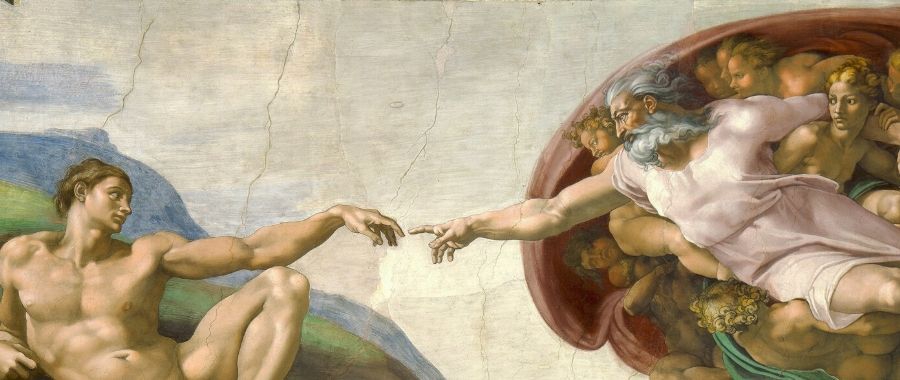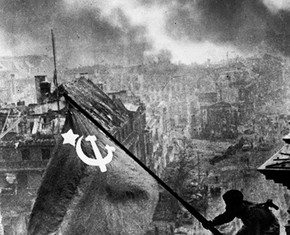The views expressed in our content reflect individual perspectives and do not represent the authoritative views of the Baha'i Faith.
Can the powerful images in religious art become like a veil that prevents us from seeing the more important inward interpretation rather than the mere outer form?
The Book of Revelation’s utterly detailed description of St. John’s vision of the woman in heaven has inspired Christian art over more than a thousand years – up to our time. But it has also confused many observers, preventing them from understanding the inner truths that description represents.

The most prominent visual depiction of that Biblical vision came from the great master of European Renaissance Art, Albrecht Durer (1471-1528) from Nuremberg in Germany.
On his iconic woodcut, Durer depicted the moment when the newborn child is caught up onto God. In the woodcut the woman in heaven – a symbol for the religion of God, adorned as a bride – stands on the crescent moon. Wings allow her to rise above the threats on Earth and flee into the desert wilderness – the Arabian Peninsula. There she would remain 1260 years as prophesized in the Book of Revelation, until the Promised One – the Bab – would arise in the year of 1844, the year 1260 of the Islamic lunar calendar.
Durer’s art, and that of the many other artists inspired by him, played a significant role in how believers apprehended, understood and dealt with the mysterious apocalyptic signs in the Book of Revelation. Art of this kind has had a profound and at the same time disturbing impact on how believers imagine the apocalypse, with its woes and fears of the end of this world possibly coming soon – in many facets of Christian belief even in the present day.
Taking a journey through contemporary Christian church art in my part of the world, Europe, tells a fascinating story. Left over from the grand vision of St. John, an infinite number of sculptures and paintings show the woman in heaven as Mary with the infant Jesus on her arms, while standing on the crescent moon and surrounded by a halo of light.
Fascinated by this depiction, in various travels in Europe during this year I identified many such images. I even discovered three of them in a church on La Gomera, a Canary Island in the Atlantic and at the farthermost corner of Europe. This reminded me immediately of a passage from the Baha’i teachings, when Abdu’l-Baha commented on the two ways of looking at the Holy City of Jerusalem as mentioned in the Book of Revelation:
This is the outward sense of these verses in the Revelation of John, but they also have an inward interpretation and a symbolic meaning … – Abdu’l-Baha, Some Answered Questions, p. 54.
We can be blinded by a literal interpretation of scripture, and prevented from seeing its more insightful and beautiful symbolic meanings, as well. In this case and in many others, because the powerful artistic depictions so dominated the consciousness of Christians for so long, the symbolic meaning of the Book of Revelation – the “inward interpretation,” as Abdu’l-Baha described it, was often lost.
Nonetheless, every time I see a Mary on the crescent moon with rays of light around her, I say to myself: Yes, this is meant as a sign pointing towards the revelations of the Bab and Baha’u’llah!
Certainly, no less important on my spiritual travel was another realization: The “climate warming crisis” – as we often call it in Europe – also has an inward interpretation with implications going far beyond reducing carbon dioxide emission, as challenging as that goal certainly is.
The inner dimension of climate change impels us to recognize the oneness of humankind as a process that can overcome the social, economic and political divides currently paralyzing large sections of our societies:
For each and every people, and every religion, await a Promised One, and Baha’u’llah is that One Who is awaited by all; and therefore the Cause of Baha’u’llah will bring about the oneness of mankind, and the tabernacle of unity will be upraised on the heights of the world, and the banners of the universality of all humankind will be unfurled on the peaks of the earth. – Abdu’l-Baha, Selections from the Writings of Abdu’l-Baha, p. 101.
Without recognizing constructive ways towards the oneness of humankind, it might easily happen that secular apocalyptic anxieties continue spreading. Certainly, the currently visible insatiable greed for more and more material profit points into this direction. Is this greed perhaps the modern version of the red dragon in St. John’s apocalyptic vision?
















Comments
Sign in or create an account
Continue with Googleor